SEARCH






|
|
|
|


by Yvette Depaepe
Published the 8th of March 2021
The activities of Hans Martin Doelz in Abstract Photography and Architecture Photography were his first steps with the new medium after his experiences in image-making with the help of computational algorithms. Mostly these images were characterized by graphic structures, order, disorder, colours and shapes. Currently, Hans Martin sees himself as an observer of the everyday life with the opportunity to record everything interesting . His goal is to never stop being an observer and improve constantly his photographic skills. Let's listen to what he has to tell us and learn more about this artist.
Briefly tell us about yourself, your hobbies and other jobs, Hans-Martin.
I’m 71 years old, married to my wife Carmen since 1977 and retired from my job as a financial controller in the automotive industry several years ago.
Active sports accompanied my life since the late 1960s. I started with track and field running and ended up with long distance running (finishing 6 marathons in the 1980s).
Actually I'm still running but the distance of the races I'm participating has decreased to maximum 10 km.

'Self-Portrait – September 2019'
How has your history and life experiences affected your photography?
Which are your most important experiences that has influenced your art?
Well, probably one of the most important influences came from Chuck Close.
In the 1980s, I attended an exhibition of works by Chuck Close (Charles Thomas Close). He is an American painter and photographer. As a painter, he makes massive photo-realistic portraits. Starting from a rasterized photo, he creates his pictures by applying one careful line after the other in several colours or shades of gray. He works methodically and begins his loose but regular grid in the left corner of the canvas. His works are usually larger than life and very focused.
These paintings had a very strong influence on me and sparked my interest in dealing with the subject of "visual perception".
What first attracted you to photography?
My first camera was a birthday- or Christmas gift in the early 1960s. It was a 35mm camera which was sold in the most popular department store of my home town, the „Kaufhof“. The manufacturer was unknown (probably an East-German), the camera was sold under the Kaufhof house-brand „Reporter“. The price was about a tenth of the price for a Leica camera, let’s say it was affordable.
The first shots were recordings of my daily life. Friends, events and so on.
But very soon a huge problem became evident. The costs of films and development were high in those days, our two-room-apartment was too small to set up an own darkroom. So these works had to be done by the local photography shop.
That’s why the number of photographs which I took in the 1960s is very small.
Still, interest in photography as a way to record one’s own life was aroused.
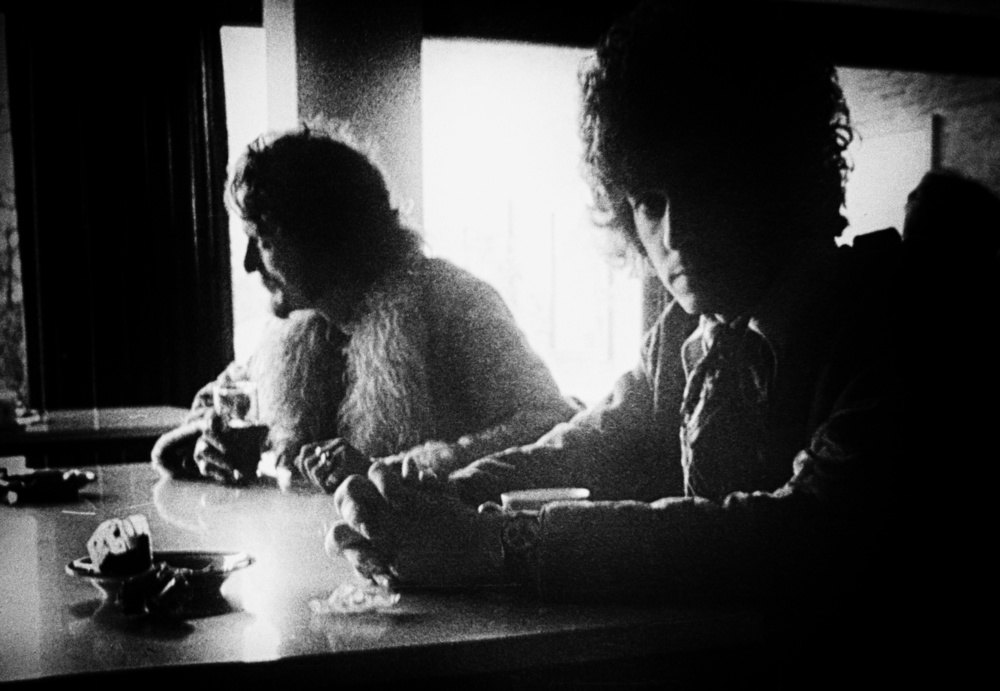
'Eric Clapton, Ginger Baker, May 1967, Bremen, Germany'
Describe your overall photographic vision.
Finding and expressing a photographic vision, specifically where people, places and cultures are concerned, is not quite easy to do. I think it helps a lot to have a look in photography books of the old masters, to deal intensively with the history of photography, her evolution and find out, in which direction the own way as a photographer shall go.
Currently I see myself as an observer of the everyday life with the opportunity to record everything that interests me with my camera. In every situation I ask me two questions: the first question „WHY do I want to record it“, the second question „HOW shall I record it?“ But, honestly said, sometimes I don’t ask me WHY before I press the shutter button, if so, I ask me later: „Why DID I record this. Releasing the shutter was in this case more or less an unconscious decision. But always I ask me HOW before I release the shutter.
Why are you so drawn by Architecture and Abstract Photography?
My activities in Abstract Photography and Architecture Photography were the first steps with the new medium after my experiences in image-making with the help of computational algorithms. Mostly these images were characterized by graphic structures, order, disorder, colours and shapes.
Meanwhile, after studying the photographic works of the old masters I’m much more open for other genres and I don’t exactly know in which genres I’ll be active in the near future.
What is more important to you, the mood / story behind your images or the technical perfection?
I think, every picture tells a story, at least to the photographer who has taken it. Concerning technical perfection: There are really great photos in existence which are not technical perfect.
It’s quite simple: You should always try doing your best.
What gear do you use (camera, lenses, bag)?
In the beginning (of digital photography) I used a small compact camera which I wore on my belt. This was very comfortable, it was possible to carry it all the time when I was on the road.
Currently I predominantly use my Leica M9-P. A digital rangefinder camera, 18 MP full frame sensor, no autofocus, no live view. The perfect tool for my purposes. I bought the camera in 2013 together with a 35 mm Leica-lens. One year later I bought a used 24mm Leica-lens which is more suitable for special architectural images or for street photography. This gear (camera + 2 lenses) in a small leather bag weighs about 1.5 kg which is still very comfortable.
For special purposes I recently bought a 1.2/75mm lens from a Chinese manufacturer.
What software do you use to process your images?
Included in the Leica M9-P purchase was Lightroom (Version 5), which I use to process my images.
Can you tell us something more about your work flow ?
Interestingly, I attended my first photo-workshop ever just in May 2019 where one issue was optimization of workflow and organizing data storage to prevent loss or damage of files.
Due to the fact, that I don’t shoot everyday and (at least until now) take relatively few photos this issue was not a major important one for me. Nevertheless it makes sense to deal with that matter even when the number of photos is not that big.
I work with a MacBook Pro 15’’. The first step is to import the files from the SD-card into Lightroom. After processing the images I export them as jpg-files in the best quality. Until now I stored these jpg-files on an external HDD and on an USB-stick which I store in different places. Maybe I will store them in the future in the iCloud. The original files remain on the SD-cards, I don’t erase them to have another opportunity in case of emergency. If this all is optimal ? I don’t know.
What is your most important advice to a beginner in Architecture and Abstract Photography and how do you get started?
That depends on what you are aiming for. If you want to grow as a photographer and build up a reputation, develop your own idea, don’t copy the work of anybody else. That applies not only to architectural or abstract photography.
Who are your favourite photographers and more importantly, how has your appreciation of their work affected how you approach your own photography?
There are a lot of photographers whose work I admire and appreciate a lot, even if they were (or still are) active in other genres than I am. Spontaneously two names of American photographers come to my mind: Dorothea Lange and Gordon Parks. Among lots of other well known names from that era of photography. Without hesitation I would call Lange’s „Migrant mother“ and Parks’ „Department Store, Mobile, Alabama, 1956“ iconic photographs. I will add links to theses photos later in the text.
Another name I would like to mention is Vivian Maier. She definitely belongs to the best street photographers and left behind a lot of masterpieces of street photography.
Last but not least, there is the German born Fred Herzog who emigrated to Canada in the 50s and recorded life in Vancouver for more than five decades. He used Kodachrome slides at a time when colour photography was more or less frowned upon among art photographers. Fred Herzog, whose work was not widely appreciated until 2010, had a keen eye and an excellent sense for colour and composition.
Lately Fred Herzog’s photographs influenced my own approach to photography as I currently move from pure architectural photography to street photography.
To me, street photography is everything that happens in front of the camera that wasn't planned or set up. Quote: „It became a photograph because I happened to be there and was ready with my camera.“
Is there any specific photo taken by another photographer that has inspired you a lot and why?
I already mentioned „Migrant Mother“ by Dorothea Lange and „Department Store, Mobile, Alabama,1956“ by Gordon Parks. These two images describe heavy problems, Lange’s photo shows life during the Great Depression of the 1930s, Parks’ photo shows the practice of race segregation.
'Migrant mother' by Dorothea Lange
'Department Store, Mobile, Alabama, 1956' by Gordon Parks
An image with a completely different message is „Children at a Puppet Theatre, Paris, 1963“ by Alfred Eisenstaedt.
'The Parisians' by Alfred Eisenstaedt
There are three frames in existence (33, 34 and 35) from which I think, frame 34 is the best one.
'Three frames of children at a puppet theatre' by Alfred Eisenstaedt
When I saw this photo for the first time it became immediately one of my favourites.
All three photos tell stories and are masterpieces concerning composition and decisive moment.
Are there any specific directions that you would like to take your photography in the future or any specific goals that you wish to achieve?
Probably I will continue my way being an observer and photographer of everyday life.
Some time ago I started a project with photos of mannequins in shop windows.
The mannequin, in its modern form, started to appear on the high streets of London, Paris and New York in the 1870s and quickly became an essential part of any window display.
Mannequins have always been much more than an elaborate coat hanger parading the fashionable clothes of the day, but also mimicking the fashionable body shape of their era and appearing in displays that reflect the trend topics of the times. First they have been modelled on royalty, film stars, musicians and fashion models, nowadays they primarily embody an ideal of beauty. They are an ever present feature of every high street and shopping centre in the developed world.
Many of the well known photographers of the 20th century (Lee Friedlander, Walker Evans, Vivian Maier, to name only three) have shot at least a few photos where mannequins can be seen.
Surprisingly, in our days, where photos are uploaded tsunami-like to various platforms, photos of this kind are seldom seen.
By the way, the photographer certainly faces interesting challenges when he devotes himself to this topic. Looking from the street into the shop window, he usually will see layer upon layer with varying intensities of light, the interior of the shop, the mannequins in the window display, the reflections of the street, the shop fronts opposite, and this mix of interior and exterior, of reflection and reality will in the end be visible in the photograph.
An article with 20 pictures from my Mannequins-series was recently published by the Spanish photo magazine DODHO.
Probably I will soon publish a second book. I’m thinking of including a selection of my architectural, abstract and street photography as well as several photos from my Mannequins-project. I think, these photos work better as a series than as single images.
Describe your favourite photograph taken by you and why it is special to you?
Please allow me to mention two images:
1. „Book temple III“, a photograph taken in February 2014 in the Stuttgart City Library is my most successful image so far with lots of appreciations and a publish in the Print Issue of National Geographic Magazine (USA), July 2018. The photograph is now part of the permanent collection of the National Geographic Society.
2. Another photo I like much is one of my very early shots. I was fortunate to meet Eric Clapton and Ginger Baker in 1967 sitting in the canteen of Radio Bremen, a German TV station. On that day there was a recording session of the legendary TV show Beat Club where Cream (Eric Clapton, Jack Bruce and Ginger Baker) performed „Strange Brew“. I’m proud that I could save this photo from the analogue era of photography.
This photo was already shown above.
Is there anything else you wish to add and what do you think about 1X as a home base for your work?
I joined 1X in 2013. In the early years 1X belonged to the best online-galleries for ambitious photographers and this is still the case today. I saw a lot of inspiring photos here which helped me to develop my own photographic vision. Today, after collecting and studying a lot of books by the old masters of photography, I’m still trying to grow as a photographer.
And I’m not afraid to take photos that don't fit the 1X style. It’s never too late to leave the well-trodden paths and to break new ground.
Finally: Thank you very much, dear Yvette, for giving me the opportunity to present my images and thoughts in this interview.
Many thanks to you, Hans Martin.
I'm sure our readers will enjoy to learn more about you as much as I enjoyed interviewing you.
 | Write |
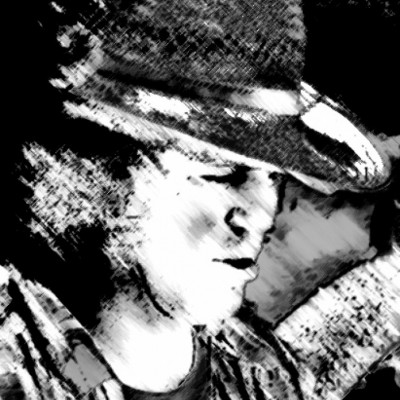 | Holger Goehler PRO Danke Martin, wahrlich eine verrückte Geschichte zum Bild aus den 60ern, die sich aus heutiger Sicht wie Seemannsgarn anhört. Bei der Jurierung in Italien zeigt sich, das gute Technik eben nicht immer über alles geht und manchmal der Augenblick entscheidet. Das finde ich gut. |
 | Holger Goehler PRO Hallo Hans-Martin,
habe mit großem Interesse diesen Artikel gelesen. Eine gute Zusammenstellung aus bekannten Fotos, die durch Deine Hintergrundinformationen nochmal in einen ganz anderen Blickwinkel rücken. Besonders freue ich mich, dass das Bild mit Eric Clapton und Ginger Baker hier seinen Platz gefunden hat. Ein wahres Fundstück und so herrlich authentisch.
|
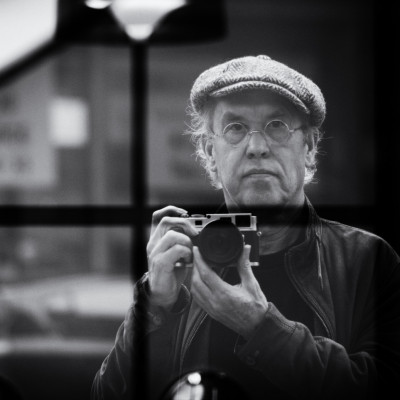 | Hans Martin Doelz CREW Hallo Holger,
es freut mich, dass der Artikel dein Interesse gefunden hat. Vielen Dank für deine Worte. Bei der Zusammenstellung der Fotos war es mir wichtig, eine Entwicklung aufzuzeigen. Und die begann (vor einer jahrzehntelangen Unterbrechung) bereits in den 60ern. Bei meinem Beat-Club-Besuch in Bremen entstanden noch weitere Fotos, die teilweise auch noch existieren, aber das Highlight ist tatsächlich das Clapton-Bild. 1967 hatte die Stadtjugendpflege meiner Heimatstadt eine Busfahrt nach Bremen organisiert, um die Beat-Club-Sendung am Samstagnachmittag live mitzuerleben. Wir waren etwa 50 Jugendliche, hinzu kamen aus anderen Orten Deutschlands wohl noch ein paar Hundert weitere Besucher, und wir alle hatten das Privileg, den Musikern in der Kantine von Radio Bremen nah auf die Pelle rücken zu dürfen. Heutzutage undenkbar ! Besonders gefreut hat mich übrigens, dass das Foto bei den diesjährigen Siena Awards von der Jury für den Pangea-Prize nominiert wurde. In der Kategorie "Documentary & Photojournalism" hat es tatsächlich das Finale erreicht. Als ich das vom Veranstalter erfahren habe, war ich doch sehr überrascht und von Stolz und Freude übermannt. Liebe Grüße und allzeit gutes Licht, Hans-Martin |
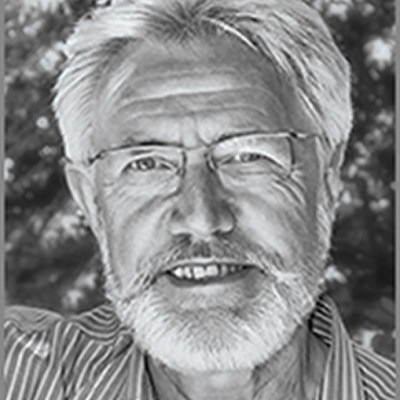 | Herbert A. Franke PRO Hallo Hans Martin, tolller und sehr informativ-interessanter Artikel.
Die ausgewählten Bilder gefallen mir ausnehmend gut.
Vor allem aber finde ich, daß es an der Zeit war für die Auszeichnung
"Photographer of the week".
Thanks Yvette for the successful selection to "Photographer of the week" .
Greeting Herbert
|
 | Hans Martin Doelz CREW Hallo Herbert, vielen Dank für deinen Kommentar. Und dass du meine Freude über dieses Interview teilst. Es ist immer ein schönes Gefühl, wenn man erkennt, dass die eigenen fotografischen Ergebnisse nicht im Rauschen der unermesslichen Bilderflut, die täglich auf uns einprasselt, untergehen. Ja, du hattest früher genau wie ich auch eine Kamera, bei der Zeit, Blende und Entfernung eingestellt werden mussten, das war in der Tat nicht immer so ganz einfach. Belichtungsmesser waren meist nur als Zubehör, also als separates Gerät verfügbar. Interessant, dass mir unter deinen vielen sehenswerten Fotos genau das am besten gefällt, was du selbst als dein Lieblingsbild bezeichnest. Die spielenden Kinder in Dubrovnik. Du bezeichnest das Bild als nicht perfekt. Ich dagegen halte es für perfekt. Es transportiert die Freude, die diese Kinder beim Spielen empfinden, in beeindruckender Weise. Schön der verschwommene Hintergrund, der rote Farbtupfer, der das Foto auch farblich interessant macht und die Bildkomposition an sich. Und das Format weist darauf hin, dass du einen Beschnitt vorgenommen hast, also genau das zeigst, was für die Bildaussage wichtig ist. Besser geht's nicht. Zumindest für meinen Geschmack. Ich habe mal irgendwo gelesen, das solche Bilder einem ambitionierten Fotografen geschenkt werden. Die Szenen sind meist nicht erwartbar, sondern man muss das Glück haben, genau zum richtigen Zeitpunkt die Kamera schussbereit zu haben. Weiterhin gutes Licht, liebe Grüße, Hans-Martin |
 | Herbert A. Franke PRO Auch Dir weiterhin alles Gute und vor allem Gesundheit.
Vielen Dank, für Deine nette Kommentierung meines Bildes der "sielenden Kinder"
Beste Grüße Herbert |
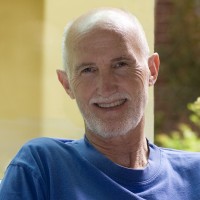 | Wayne Pearson PRO Excellent and inspiring work Hans and really enjoyed tor story, thank you. And thank you also to Yvette for all of her incredible work behind the scenes, I look forward to your features every week! |
 | Hans Martin Doelz CREW Hi Wayne, thanks for that comment. It was a great pleasure for me to speak to Yvette about my photography and I'm happy that this interview has been published now. Like you, I am looking forward to the further weekly feature of 1X-photographers. I'm always interested in the people behind the photos and I'm happy to learn something about them in the interviews. |
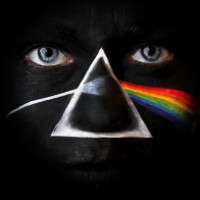 | Francesco Martinelli PRO I really like Hans's work, the composition, the geometry, the shapes, lines and curves, the attention to details. Hans Martin is also a great artist with the street, his real and not planned life pictures are very beautiful . It was very nice to read your interview and thanks to Yvette for the nice presentation. |
 | Hans Martin Doelz CREW Dear Francesco, many thanks for your appreciative words, especially that you mention the pictures of everyday life. It's a completely different challenge than abstract photography, but I like it. |
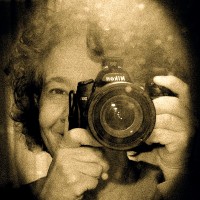 | Dorothea Garbisch Hallo Martin, schön hier von dir zu lesen und eine kleine, feine Auswahl deiner Bilder zu sehen!
Ich schließe mich Udo an: Mach weiter so! Viele Grüße, Dorothea |
 | Hans Martin Doelz CREW Vielen lieben Dank, Dorothea. Habe für dich extra ein Foto aus Hamburg eingefügt. Vielleicht klappt es ja 2022 mit einem Treffen dort. |
 | Dorothea Garbisch Ja, das HH-Bild habe ich sofort erkannt. Vielen Dank =).
Ein Treffen wäre schön! |
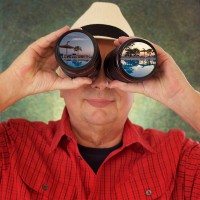 | Udo Dittmann PRO Hallo Martin,
ich freue mich über diesen informativen Artikel über dein fotografisches Schaffen.
Mach weiter so.
Gruß Udo |
 | Hans Martin Doelz CREW Vielen Dank, Udo ! Freue mich ebenfalls. |